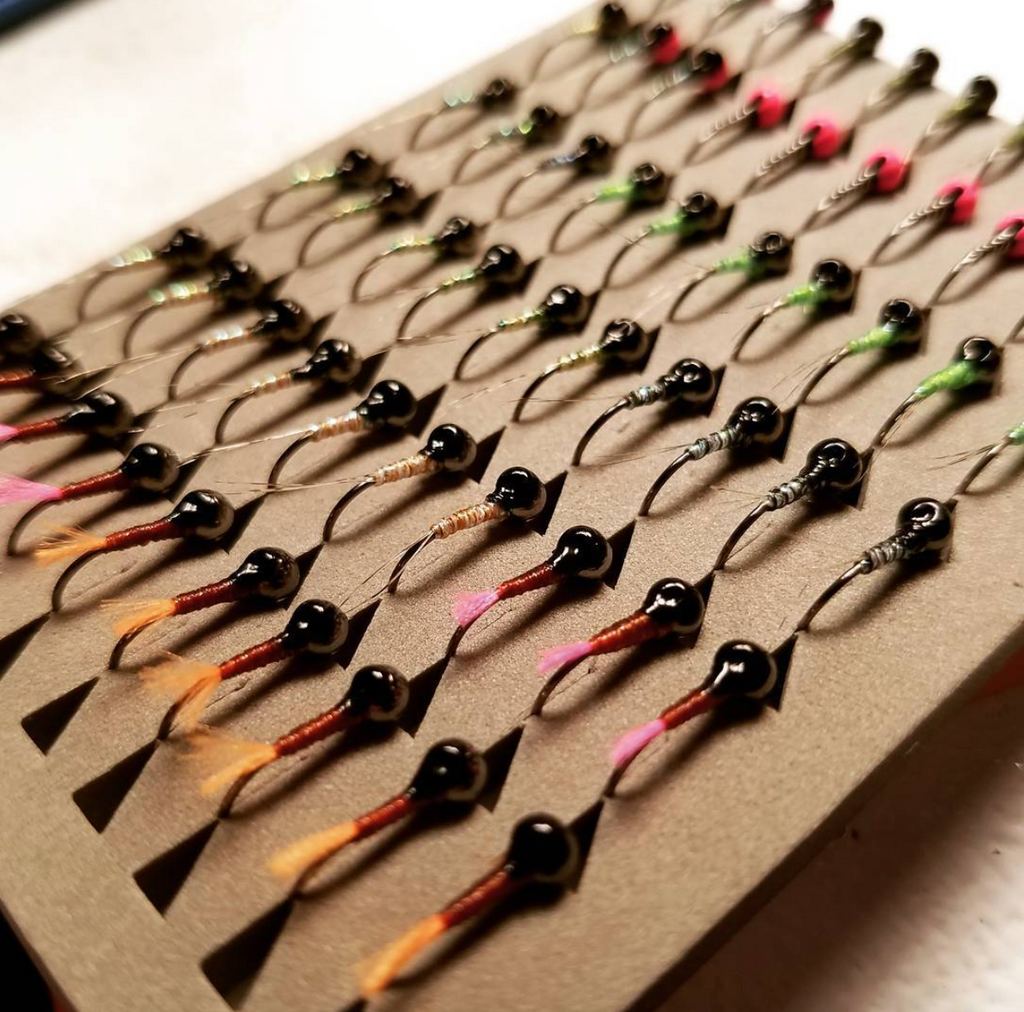
which sinks faster a pound of lead or a pound of feathers??
Share

* image by @jess_l_westbrook
by jess westbrook
We all remember the riddle “which weighs more: a pound of lead or a pound of feathers?” and the naïve answer would be a pound of lead. Of course, we all know that they actually weigh the same. As I have matured as a fly fisherman and started competition angling I have started focusing more on the sink rates of my flies than I do actual fly patterns. So instead of which weighs more feathers or lead, when it comes to fly fishing, I am only worried about what sinks fastest.
Just to tell you how serious I take sink rates — I have been known to have my pregnant wife on top of our kitchen bar dropping flies into a 7-foot vile filled with water while I am laying on the floor with a stopwatch timing how long it takes them to hit the bottom of the vile!
Increasing the sink rates of your flies will improve your catch rates significantly. Getting your flies down faster will increase the amount of time that your flies are in the strike zone and thus will result in more hook-ups.
Here are ways increase sink rates:
- UV Resin – Coating the bodies of certain flies with UV Resin to decrease resistance while sinking through the water.
- Different feathers – Tightly wrapped hackle will sink slower than Cul de Canard (CDC) feathers.
- Sleeker/Slimmer flies – A hare’s ear nymph sparsely tied will sink a lot faster than a pattern tied with what looks like a bag of dubbing.
- Lighter Tippet – Using lighter tippet will increase the sink rates because there is less resistance to from the line while the fly is sinking.
As a competition angler I am always trying to increase sink rates which will ultimately result in more fish caught. So, if you were to ask me the question “which sinks faster a pound of lead or a pound of feathers?” my answer would of course be Tungsten!!
